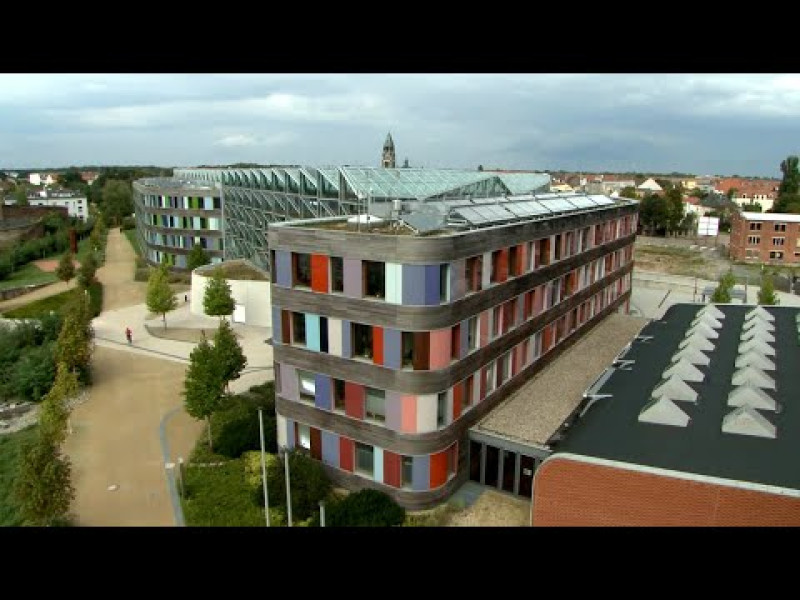Legal framework
European laws
Waste disposal is governed by a number of European regulations and directives, whereby the former automatically apply to each of the member states, while the latter must be separately transposed into national law by each member state. The basis of this legal framework is the Waste Framework Directive (2008/98/EC), which defines the main waste-related terms, lays down a five-step waste hierarchy, and contains key provisions for German waste disposal law.
German Federal law
Germany’s first uniform national waste disposal act, the Abfallbeseitigungsgesetz (AbfG), was adopted in 1972. The Waste Management Act (KrWG), which is today Germany’s main waste disposal statute (and the successor to the KrW-/AbfG act), incorporates the main structural elements of the Kreislaufwirtschafts- und Abfallgesetz (KrW-/AbfG).
Disposal of specific types of product waste (respectively end-of-life vehicles, used batteries and end-of-life electronic and electrical devices) is governed by the ELV regulation (AltfahrzeugV), Batteriegesetz (BatterieG) and Elektro- und Elektronikgerätegesetz (ElektroG).
State law of Bundesländer
The Waste Management Act (KrWG) is further differentiated by the waste management acts of the Bundesländer. However, due to the fact that, under the German Constitution, the federal government is charged with regulating waste disposal related matters (Article 74(1)(24)), the regional states only have jurisdiction over those aspects of waste disposal that are not already regulated by federal law. Hence legal prescriptions in the states law tend to address implementation related matters such as the following: determining which entities are subject to waste disposal obligations; the authorizing bodies for waste disposal matters; and municipal waste disposal ordinances.
Municipal waste disposal law
The collection and recovery of household waste at the municipal level are governed by municipal ordinances concerning matters such as usage and integration into the public system, as well as municipal garbage collection charges. For further information in this regard, visit the BMU website.
The Waste Management Act (KrWG)
Germany’s Waste Management Act (KrWG) entered into force on 1 June 2012. The KrWG, which was enacted as Article 1 of the law titled "Gesetz zur Neuordnung des Kreislaufwirtschafts- und Abfallrechts", supersedes the law titled Kreislaufwirtschafts- und Abfallgesetz (KrW-/AbfG) and transposes Directive 2008/98/EC into German law. The Waste Management Act (KrWG) is intended to tighten resource, climate and environmental protection regulations (see Article 1 of the Act).
Key provisions of the Waste Management Act (KrWG)
The Waste Management Act (KrWG) adopts and expands the definition of waste in the Waste Framework Directive (Article 3(1)), whereby the restrictive wording “moveable property which the holder discards or intends or is required to discard is replaced by “all substances or objects.” However, by virtue of having excluded elements such as “non-excavated soils and constructions,” the law still applies solely to moveable property.
The law contains a new provision concerning the distinction between waste on one hand, and byproducts that do not fall within the scope of the law on the other (Article 4). A byproduct is a substance that is produced in connection with the manufacture of another substance or product, and is thus not the main focus of the manufacturing process. In order for an element to qualify as a byproduct, it must also meet the following criteria:
- It must be possible to reuse the substance
- Preprocessing exceeding the normal industry standard scope is unnecessary
- Production of the substance is inherent to a manufacturing process
- Reuse of the substance complies with all applicable laws concerning the following: product, environmental and health protection requirements; the substance not being an environmental or health hazard
The new provision as to when a given product or substance is no longer regarded as waste clarifies the definition of “waste.” Pursuant to Article 5, a substance no longer qualifies as waste insofar as the following criteria are met:
- A recycling and/or reclamation process has been carried out
- The substance is used for a specific purpose
- There is demand or a market for the substance
- Specific technical and legal requirements are met
- Use of the substance engenders no harm
One of the core provisions of the Waste Management Act (KrWG) is the five-step (previously three step) hierarchy pursuant to Article 6, according to which the following ranking of waste management measures applies:
- Prevention
- Preparation for recycling
- Recycling
- Other types of recovery, particularly use for energy recovery
- Disposal
Based on this hierarchy, the waste management measures are to be used that best protect human health and the environment, in light of the relevant technical, economic and social factors. The waste hierarchy is fleshed out by the basic duties set forth in Articles 7 and 8. Having regard to the newly incorporated recovery/reclamation options (preparation for reuse, reclamation and/or recycling), Article 8(2) stipulates that accordingly a given recovery measure may receive higher priority or equal priority, as well as requirements concerning the prioritizing of recovery for specific types of waste may be foreseen and, are to be governed by specific regulations. Until such regulations are adopted, the previously applied so called “heat value clause” (Heizwertklausel) is to remain in force. In addition, Article 9(2) bans virtually all types of mixtures for hazardous waste.
On 1 January 2015, sorting will be mandatory for organic waste, as well as for paper, metal, plastic and glass. With a view to promoting recycling, Article 14 sets so called recovery rates that will become mandatory in 2020.
Article 17(1) stipulates that household waste and waste of other origins are to be handed over to public sector garbage collection companies, whereby private households are exempted from this requirement insofar as the waste in question “is used on a piece of property that is used for purposes of leading a normal life.” Article 17(3) states that exemptions to the handover requirement may also be granted for commercial refuse collection, insofar as such exemptions are not in conflict with public interests. Article 18 promulgates a new notification procedure for such public and commercial sector refuse collections.
According to Article 33 of the Waste Management Act (KrWG), by 12 December 2013 the administration and the regional states are to have jointly elaborated the first waste prevention program, which is to define waste prevention objectives and measures.
Articles 53 and 54 of the Waste Management Act (KrWG) promulgate a new regulation for companies that collect, transport, deal in, or act as middlemen in connection with waste. These articles eliminate the distinction between waste destined for disposal and waste destined for recycling, replacing these criteria with the potential hazards entailed by the waste in question. All transport operations involving non-hazardous waste are to be notified, and a permit is to be obtained for the transport of hazardous waste (pursuant to Articles 53 and 54 of the Waste Management Act (KrWG), respectively), whereby the KrW-/AbfG law’s provision remains in effect to the effect that transport permits issued for an unlimited term also qualify as Beförderungserlaubnis. Pursuant to Article 72(5) of the Waste Management Act (KrWG), notification and permit requirements will take effect on 1 June 2014 for companies that collect or transport waste as an ancillary activity, i.e. companies that do not specialize in waste collection and transporting.
The notification form pursuant to Article 53 of the Waste Management Act (KrWG) and a list of the authorizing bodies under Articles 53 and 54 of the Act are available from the websites of regional-state agencies known as Zentrale Koordinierungsstelle der Länder. A form must also be used to apply for a permit under Article 54 of the Act.
Transport permits are governed by the Beförderungserlaubnisverordnung until this regulation will be superseded by the Anzeige- und Erlaubnisverordnung regulation.
As from June 2012, any vehicle that transports waste must display the familiar A-Schild (Article 55). Previously, this requirement did not apply to the transport of non-hazardous waste.
Other regulations
The Waste Management Act (KrWG) is supplemented and fleshed out by a number of other regulations such as the Abfallverzeichnis-Verordnung regulation which lists the types of waste that are classified as hazardous, and those that are classified as non-hazardous. Hence this regulation fleshes out the monitoring provisions of Article 47 ff. of the Waste Management Act (KrWG).
 Click to enlarge
Click to enlarge
